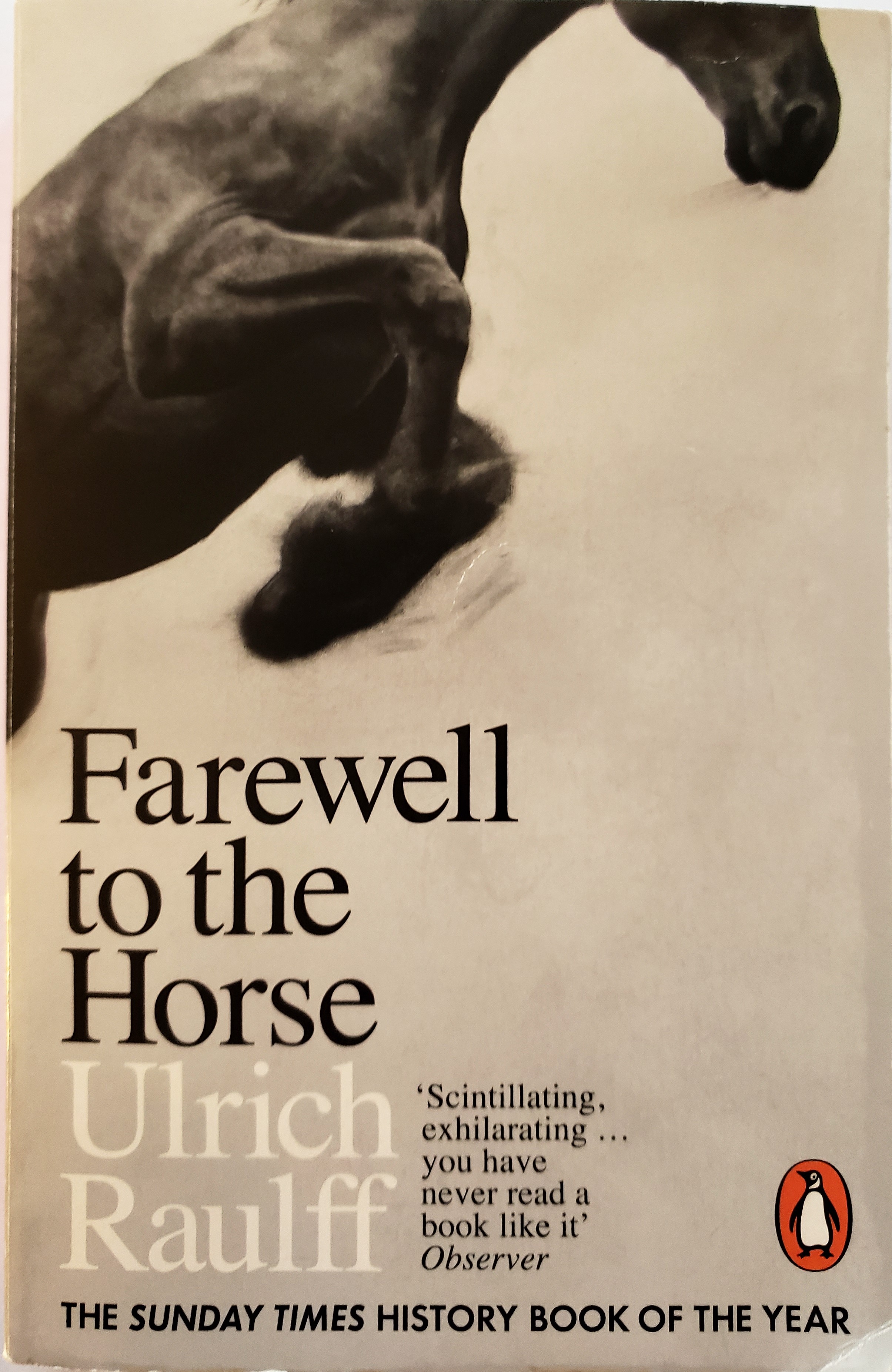“What did man gain when he allied himself with the horse? What could the horse do that other beings could not?” —– Farewell to the Horse.
I have read a lot of books about horses: how to ride horses, how to look after horses, the evolution of horses, the history of horses, the training of horses etc. etc. etc. But I have never read a book like ‘Farewell to the Horse’ by Ulrich Raulff (translated by Ruth Ahmedzai Kemp). This book traces the importance of the horse to mankind from the start of the 19th Century to the middle of the 20th Century. During that time the role and the importance of the horse changed dramatically. Raulff has three areas he focuses on to investigate the importance of horses to mankind.
1.The Physical presence of the horse.
“…..the horse could bear kings, knights, female lovers, and rural doctors, draw carriages and cannons, transport hordes of workers and employees, and mobilize entire nations.”
2.Knowledge and experience gained through the horse.
“The horse was part of a complex economy of various knowledge areas (medical, agrarian, military, artistic) and types of knowledge areas (empirical, experiential, scientific) as well as a long literary tradition founded in antiquity.”
3. A transmitter of emotions.
“…pride and admiration, desire for power and lust for freedom, fear, joy, and compassion. In its capactiy as bearer of signs and symbols, in its role as semiophore, the horse has always been a significant carrier and transmitter of human emotions, moods, and passions.”
Over the course of this very engaging book Raulff takes us through some of the 19th and 20th century history of mankind and horses, from Buffalo Bill Cody and Teddy Roosevelt’s Rough Riders to the horrors of World War 1. But Raulff does not limit the history of our relationship with horses to just the historical events. He also opens up the world of horses in art and ritual drama.
Does anyone, who was alive for the funeral of John F. Kennedy, not remember the horse, led by a soldier in parade uniform? The riderless horse was fully saddled, with a pair of riding boots reversed in the stirrups. This was not Kennedy’s horse. He had never been a cavalryman. The horse was nervous and pranced along behind the horse drawn coffin. This is the “caparisoned horse” and it was first seen at the funeral of George Washington in 1799 and again behind the coffins of Abraham Lincoln, Franklin D. Roosevelt, Herbert Hoover, Lyndon B. Johnson and Ronald Regan. The riderless horse with boots reversed is an image that evokes strong emotions even if the symbolism is obscure or unknown. No one seeing it will be unmoved.
Raulff takes us on a journey through horses in war, horses in art, and horses in literature. At the end of this book we are left with the realisation that horses are no longer the presence in our lives they once were. We have replaced them with machines, automobiles and computers. Have they been reduced to objects only for sport or companionship or therapy? Raulff does not give us a concrete answer to what roll the horse will play in our lives going forward. But he finishes the book with a story of a horse he knew surviving a serious illness. Survival.
What did I like? The book is well researched and liberally sprinkled with black and white photos of horses as well as color plates of horses in art. I found it thought provoking to be led through a journey that was not only about the physical history of horses but their symbolic and emotional value in our lives as well.
What did I not like? Occasionally the book was too academic for me. A chapter on information on various bibilographers is above my reading grade. But this was just a small portion of the book.
If you are interested in horses, or interested in knowing how the image and symbolism of the horse has affects us, even today, then read this book. It won the Sunday Times History Book of the Year award in 2017. It deserved this award.
Just as an aside…a nude portrait by Lucien Freud sold for $56 million in 2015. I wonder if the grey gelding knows how important the man holding his halter is, and how valuable his portrait may be.


Leave a Reply to anne leueenCancel reply